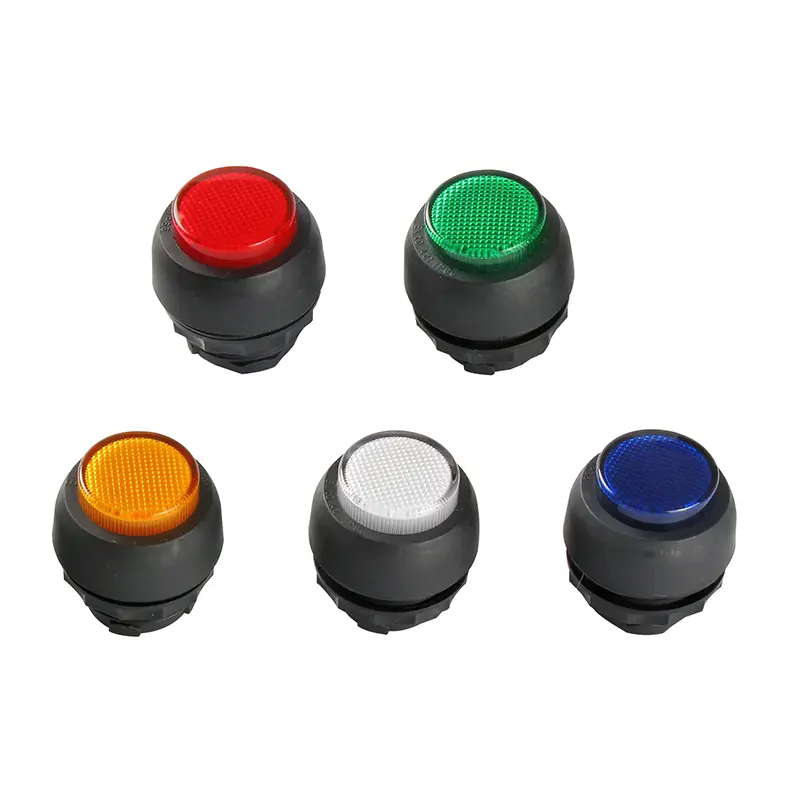Which Explosion Proof Signal Light setup keeps my hazardous area line safe and on schedule?
2025-11-12
On a damp shift with forklifts sighing and valves ticking, the panel stayed calm because one lens told the truth at a glance. That was when I started tracking incident-free nights back to a dependable Explosion Proof Signal Light. I did not set out to chase brands, yet the units labeled YXFB kept appearing on panels that simply worked, so I paid attention and wrote down what actually helps crews under pressure.
Why does clarity beat volume when the floor is noisy?
A hazardous area signal must be readable before it is impressive. Lens geometry that resists glare, steady output that does not shimmer through dust, and color logic that mirrors how operators talk on the radio make decisions faster.
- Red yellow green choices align with start stop fault language used on the line
- High-contrast optics stay legible at odd angles across the bay
- Even intensity prevents “I thought it was green” mistakes at shift change
How do I prove it is safe before I ever energize it?
I verify the paperwork first for any explosion-proof LED signal light. I confirm national explosion-proof certification numbers, check alignment with CH0802 series requirements, and match the gas group to the bay that may carry methane and propane so audits are straightforward later.
- Clear Ex markings with gas group and temperature class on the nameplate
- Certificate pack that lists CH0802 series alignment for the exact model
- Ingress protection that matches wash-down and fine dust where the panel lives
Could a modular design make everyday work simpler?
A modular signal light lets me build one, two, or three windows and map them to the site’s state logic. When a step is retired, I pull a segment; when a new interlock arrives, I add one without redesigning the door.
- Shared footprint keeps drawings tidy across mixed equipment
- Color modules swap quickly during upgrades without new cutouts
- Spare strategy becomes simpler because segments are unified parts
What mounting and wiring save real hours on day two?
A compact body acts as an explosion-proof control cabinet indicator in an embedded cutout, or it mounts on a small bracket when the door is crowded. Threaded terminations suit traditional conduit runs, while an aviation plug speeds programmed changeovers.
- Embedded panel fit for shallow doors and short internal runs
- Standalone bracket for skids and frames where cutouts are not ideal
- Threaded connection or aviation plug depending on plant standards
Will it keep telling the truth after years of heat and vibration?
With quality diodes, service life can reach toward 100,000 hours, which means fewer lockout events and fewer weekend callouts to remote skids. That reliability is why I lean on an Explosion Proof Signal Light instead of a generic lamp.
- Stable drivers prevent flicker that can be mistaken for a developing fault
- Rugged lenses resist micro-scratches that dim apparent brightness
- Heat management preserves LED life in continuous duty
How do indicators and beacons avoid stepping on each other?
I pair the panel’s indicator with an explosion-proof warning light for trips and interlocks, then keep identical color rules so nobody relearns during an alarm.
- Indicator shows steady run stop fault without drama
- Warning light escalates during abnormal or emergency conditions
- Unified colors reduce training time and cut misreads under stress
Which everyday headaches disappear with the right choice?
- Crowded doors gain a compact unit that leaves room for e-stops
- Mixed fleets standardize on one platform with modular windows
- Methane and propane areas match the listed gas group for compliance
- Planned swaps are quicker using plug-style wiring during upgrades
- Audits move faster with clean markings and a saved certificate pack
What quick comparison helps me choose in the field?
| Scenario | What I verify | Configuration I pick | Field note |
|---|---|---|---|
| Packaging line start stop fault | Sightlines through mist and foot traffic | Three-window modular red yellow green | Match colors to SOP cards for new hires |
| Explosion-proof cabinet door already busy | Door depth and existing hardware | Embedded cutout with threaded termination | Keeps the door readable without new holes |
| Remote mine pump skid | Vibration and swap access | Bracket mount with aviation plug | Fast replacement during shift change in bad weather |
| Gas area with methane and propane | Certificate and gas group | Certified model aligned with CH0802 series | Keep a nameplate photo in the maintenance log |
What wording guides purchasing toward the right part?
- State “Explosion Proof Signal Light” and the exact hazardous area classification
- List window count with assigned red yellow green for run stop fault
- Choose embedded or bracket mounting and confirm the cutout if embedded
- Specify threaded termination or aviation plug per plant practice
- Attach certificate copies and note CH0802 alignment for the model
Why do I keep shortlisting YXFB for upgrades and new builds?
The compact body fits real panels, the modular approach mirrors how teams think, and the documentation stands up during tough inspections. In my notes, that combination turns a simple hazardous area signal light into a quiet reliability upgrade across mixed equipment.
Do you want a fast spec check or a straight quote today?
Send a photo of your door and the states you need to display, and I will map an explosion-proof LED signal light configuration that fits your workflow. If you need certificates or pricing, contact us with quantity, colors, mounting style, wiring preference, and site classification. I will respond with a clean submittal, lead time, and a practical path to safer shifts. For a quick conversation, just say contact us and I will follow up.



